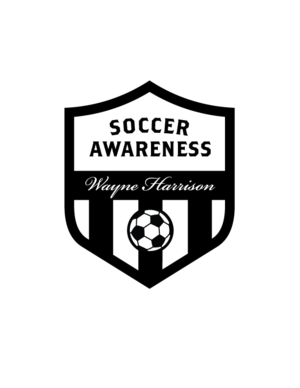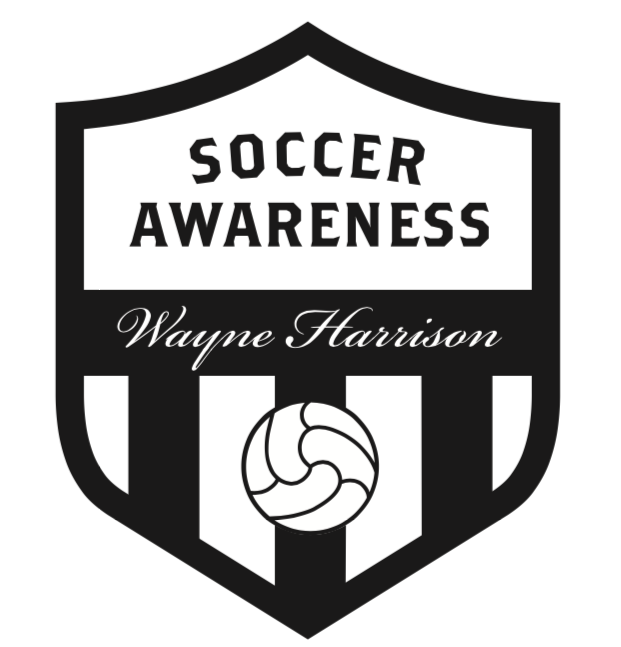Individual Striker Movements Off the Shoulder Part 4 - Exercise to Practice the Opposite Move
/This is part 4 of 4 on our Individual Striker Movements Off the Shoulder Series.
Exercise to Practice the Opposite Move
- Striker (E) comes short and shows for the ball asking for a pass from (D). Defender (F) follows.
- Midfielder (D) passes to (C), (D) then passes over the top into (E)’s path as he / she spins.
- Defender must play passively. To continue the work once player (E) receives the ball they must beat (F) back to the touchline. Players (C) and (D) go to the middle and the next two take their place.
- As the pass is going from (D) to (C) the striker shouts the code word and spins to receive the pass as player (C) is about to pass it. The shout must be early to (C) to make the pass at the exact same time (E) is spinning to receive it.
- Develop – The player receiving the pass can get it “short or long”, to keep the defender guessing.
- Short, when the code word is not used but the player could use any other word to confuse. Long, with the actual code word used. Combine with the passer to beat the defender.
- Striker (E) comes short and shows for the ball asking for a pass. Defender (F) follows.
- Midfielder (C) passes to (D), (D) then passes over the top into (E)’s path as he / she spins.
- Defender must play passively. To continue the work once player (E) receives the ball they must beat (F) back to the touchline. Players (C) and (D) go to the middle and the next two take their place.
- As the pass is going from (D) to (C) the striker shouts the code word and spins to receive the pass as player (C) is about to pass it. The shout must be early to (C) to make the pass at the exact same time (E) is spinning to receive it.
- Develop – The player receiving the pass can get it “short or long”, to keep the defender guessing. If short, combine with the passer to beat the defender.
- This is the “Vialli Move”.
Working Opposites with Movement of Strikers
- Strikers must recognize when the man on the ball has TIME to play the ball forward. Strikers move towards the ball dragging the man marking defenders close to them.
- As the player checks toward the passer as if to receive a pass and is marked tightly by the defender, a sharp spin is made to receive a long pass behind (into the space created by coming short) rather than the short one the striker seemed to be asking for. A Sharp turn / spin into the defender and across the shoulder is the best move rather than the old arc run into space. With the old arc run this is easily tracked by the defender as there is time to see the ball and the player.
- When the player has time on the ball to pass expect lots of movement at pace e.g. short to go long. Midfield player can pass down the side of the striker. When there’s no time on the ball i.e. they must pass quickly, expect players to stay in their positions to provide options. This means if they go short to receive they get the ball to feet from the first run because there is no time to make the second run as the player on the ball has to release it quickly.
Working Opposites Checking Back to Receive
- The midfield players need to know the strikers are playing opposites. This time the strikers are moving away to come back. Again there is time on the ball for the midfield player and the opposite movement comes into effect (both working off the second run), but if no time the striker knows it will be played first time into the first run.
- The opposite movement is if the striker shows to receive to feet, he / she is going to spin away and receive in space in front of them in the form of a through ball, if he / she runs away, then expect a check back to feet.
- This is especially effective when the strikers are not too close together so there’s lots of space to work in. To make the movement clearer the strikers can have a code word to call as a signal so the player on the ball knows what is happening. They call it as early as possible.
No Time On the Ball to Wait for the Second Run
- There is no time on the ball and the passer has to release the ball quickly due to quick pressure on the ball from (C).
- In this case the striker must recognize this and act accordingly and expect a pass from their first run, in this case with (10) it can be a run inviting a ball to be played down the side into the channel for the striker to run on to. In the case of (9) it is a pass to feet coming short to receive. The pass can be made from wide areas too with the same conditions passing off the first run or passing off the second run depending on the time on the ball of the passer or if the striker has given the code word signal.
- In a game the team could be prepared to play on the basis that they always make the pass off the first run unless they get a call from the striker using the code word to implement the opposite movement. It isn’t always possible in split second situations to recognize how much time a player has on the ball so it may be best just to work the movement off a call.
- Receiving from a wide position on the field the same principles apply receiving off the first pass, as above (10) down the side to space to run on to and (9) to feet. Here the passer must release the pass early (because of pressure on the ball) or they have not received the code word signal to implement the opposite move.
- In a game situation for the first thirty minutes it could be a game plan where the strikers always work off a pass from the first run and get the defenders conditioned into thinking that is always the case saving the decisive moment later in the game where the code word signal is called and they work the opposite move receiving from the second run. It may be they only have to do it once in a game and it results in a goal (due to the defenders being unprepared for the opposite movement) giving the striker a vital second or fractions of a second thus gaining a couple of yards on the defender in a vital area of the field to receive a pass and score a goal.




















